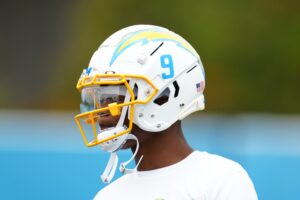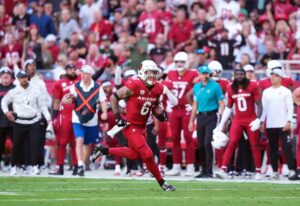Green Bay Packers head coach Mike McCarthy likes to employ power-running formations, especially during winter games at Lambeau Field. ‘Power-running’ does not mean colliding into defenders. It simply means to run with multiple lead blockers, which, traditionally, are a fullback and the backside guard.
However, since the NFL has become pass-happy, tight ends have emerged as a species of players capable of blocking at the line of scrimmage and running post patterns against defensive backs. The combination of size and athleticism they offer is too great not to use them as lead blockers in power running formations. Now, Green Bay has Martellus Bennett and Lance Kendricks, two players that fit that description.
Chris B. Brown of Grantland.com details the ins-and-outs of power running. But, to simplify to its basic nature, power running is using multiple play side linemen (tight end, tackle, or guard) to double-team the defensive end and linebacker to open a lane for the running back and fullback.
Two Tight End Formations Will Help Green Bay Packers Running Game
Last season, the Packers resorted to using a wide receiver-turned-running back as their primary back. Mike McCarthy used easier concepts to understand such as outside-zone, guard runs, and guard/center stretch runs, which will once again be the primary reads for Ty Montgomery.
Basically, they pulled either a guard or the center to be the lead blocker for Montgomery. Outside-zone schemes give the running back the option to either follow the strong side of the offensive line as they block in unison or break behind the center for a north-south run.
The Packers could add the toss sweep and play-side tackle running plays to their playbook. Mike Tanier breaks both of these plays down in his lengthy piece for FootballOutsiders.com, but below are quick summaries of what happens in each of these plays.
Toss Sweep
In the toss sweep, a tight end is lined up on each side of the offensive line with two wide receivers flanking them. The purpose of the receivers is to force defensive backs from creeping up at the line of scrimmage. Say the Packers run the toss sweep. They would be in a 12 personnel (one back, two tight ends, two wide receivers). Say, Jordy Nelson and Davante Adams flank Bennett and Kendricks. The fear of opening a passing lane draws the defensive backs outside, and gives the offense an advantage.
Once the ball is snapped, the strong side guard and center are pulled outside the strong side tight end as lead blockers for the running back. The backside tackle has to burst into the backside A-gap to block the oncoming rusher before he blows the play up.
This play can be run out of Ace formation or 12, as well as Heavy or 13 (one back, three tight ends, one wide receiver). The tight ends create mismatches that open the lanes.
Pulling Play-Side Tackle
Two tight ends also make it possible to run a pulling play-side tackle play. The two tight ends play a critical role in this play, as they become the key blockers allowing the strong side tackle to run and become the lead blocker for the running back. Since the Packers are one of the few remaining teams with a fullback, they would also send the fullback giving the running back two lead blockers.
Say Bennett and Kendricks (or Richard Rodgers) line on the right side of the formation. They would block the linebacker and oncoming rusher, while Bryan Bulaga would burst in between them to block any defender in the way. Montgomery, and possibly Aaron Ripkowski, would follow suit.
This play can be run out of a variety of modified formations such as the I-formation and the Pro Set, but switch a wide receiver with a tight end.
These are simple run concepts that will have an impact on Montgomery running the ball. Montgomery will probably never become a workhorse back, but he can be a successful running back if he receives the help of great blocking tight ends. Since both Bennett and Kendricks can catch the ball as well, the Packers could run the ball on either side, and have the other player run a seam route, in-cut, or a flat to freeze defenders.






